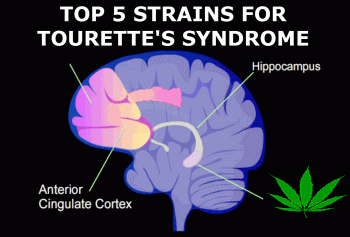
Introduction
Recent research suggests that women may be more sensitive to the effects of tetrahydrocannabinol (THC), the main psychoactive compound in cannabis. Studies have found that females exhibit greater sensitivity to the pain-relieving qualities of THC and develop tolerance to its effects more quickly than males.
Sex Differences in Sensitivity
-
Increased Sensitivity in Females: Multiple studies have found that women exhibit increased sensitivity to the pain-relieving and subjective effects of THC. A study by Rebecca Craft and colleagues at Washington State University discovered that female rats were at least 30% more sensitive than males to the pain-relieving qualities of THC.
-
Dose Adjustments: Researchers adjusted the doses for female rats to be 30% lower than those for males, but the females still developed more tolerance to THC after just 10 days of treatment.
-
Hormonal Influence: This heightened sensitivity may be due in part to fluctuations in female sex hormones. Craft explained that females show a “very clear spike in drug sensitivity right when they are ovulating, right when their estrogen levels have peaked and are coming down.”
-
Human Studies
-
A study by Cooper and Haney found that among frequent cannabis users, women reported greater abuse-related subjective effects like feeling “good” and wanting to “take again” after smoking cannabis compared to men.
-
Another study discovered that in occasional cannabis users, women experienced stronger positive subjective effects like feeling “good” and “like the drug” at a low oral THC dose (5 mg), while men had stronger effects at a higher dose (15 mg).
Anxiety and Adverse Effects
-
Higher Anxiety Risk: The greater sensitivity of women to the effects of THC may put them at higher risk for adverse events, particularly anxiety. A study by Klumpers and colleagues found that 45% of infrequent female cannabis users discontinued a study due to anxiety after inhaling purified THC vapor, compared to 0% of males.
-
Panic Attacks: Survey data also suggests that women are twice as likely as men to report cannabis-induced panic attacks or anxiety.
-
Mechanisms of Action:
-
Animal studies have found that THC administration into the amygdala, a brain region involved in anxiety, increased anxiety in male rats, an effect blocked by a CB1 receptor antagonist. This suggests that the functional status of CB1 receptors in the amygdala may underlie the dose-related increase in anxiety-related effects of THC in females compared to males.
-
Implications for Therapeutic Use: The heightened sensitivity of women to THC’s negative effects, such as anxiety and paranoia, is an important consideration given the growing interest in therapeutic cannabis use. As more people turn to cannabis for medical purposes, understanding these sex differences is crucial to ensure safe and effective treatment.
Withdrawal and Dependence
-
Vulnerability to Dependence: As cannabis use becomes more prevalent, understanding the unique challenges women face regarding withdrawal and dependence is crucial. Research indicates that women may be more susceptible to cannabis dependence and experience more severe withdrawal symptoms than men. This section delves into the various aspects of withdrawal and dependence, highlighting the telescoping effect, withdrawal symptoms, and the unique “munchies” phenomenon.
-
The Telescoping Effect refers to the phenomenon where women tend to progress from initial cannabis use to dependence at a faster rate than men, experiencing a shorter interval between onset of use and development of cannabis use disorder. This accelerated progression may be influenced by hormonal fluctuations, social and environmental factors, and increased vulnerability to the effects of cannabis.
-
Withdrawal Symptoms: Women tend to experience more severe withdrawal symptoms when abstaining from cannabis compared to men, which can include increased irritability, anxiety, and depression. This disparity may be attributed to hormonal differences, as fluctuations in estrogen levels can affect the brain's response to cannabis withdrawal. Additionally, women may be more likely to experience physical symptoms such as headaches, nausea, and fatigue during withdrawal. Overall, the severity of withdrawal symptoms can make it more challenging for women to quit or reduce cannabis use, highlighting the need for gender-specific support and treatment strategies.
-
Munchies Effect: Interestingly, the increased appetite caused by THC is the only effect where males show more sensitivity than females.
Implications for Medical and Recreational Use
-
Public Health Considerations: As cannabis use becomes more widespread, understanding the sex differences in its effects is crucial. The higher sensitivity of women to the negative effects of THC, like anxiety and paranoia, is an important consideration given the growing interest in therapeutic cannabis use.
-
Targeted Interventions: In the context of recreational use, the unique challenges women face with THC use have important implications for public health policies and treatment approaches. Women may require lower doses of THC to achieve desired effects, which could lead to unintended overconsumption and adverse outcomes. Additionally, the heightened risk of dependence and withdrawal symptoms in women highlights the need for targeted interventions and support services.
-
Future Research Directions: Researchers are now studying how the effects of cannabidiol (CBD), another compound found in cannabis, can counter some of THC’s negative side effects. Future studies should investigate the interaction between sex, cannabis use frequency, and the effects of THC to provide a more comprehensive understanding of this important issue.
Limitations and Future Research Directions
-
Inconsistent Findings: It’s important to note that not all studies have found sex differences in the subjective effects of THC. An earlier study in frequent cannabis smokers reported no differences between men and women in subjective effects after oral THC administration. Another study found that in participants with a wide range of cannabis use frequencies, women exhibited smaller increases in heart rate, took longer to detect drug effects, and experienced shorter durations of effects when smoking cannabis compared to men.
-
Complexity of THC’s Impact: These inconsistent findings underscore the complexity of THC’s impact and the need for further research. Future studies should explore the potential therapeutic applications of CBD in mitigating the negative effects of THC, particularly in women.
Conclusion
In conclusion, women face unique challenges with THC use due to their heightened sensitivity to the drug’s effects. These challenges include greater sensitivity to the pain-relieving and subjective effects of THC, faster development of tolerance, increased risk of anxiety and adverse events, and vulnerability to dependence and withdrawal symptoms.
As cannabis legalization continues to spread and therapeutic use grows, understanding these sex differences is crucial for informing public health policies, treatment approaches, and harm reduction strategies. By acknowledging the unique needs and experiences of women, we can ensure that the benefits of cannabis are accessible while minimizing the risks.







